|
Just like Rebecca discussed in her post last week, I also had the privilege of attending the Catholic Leadership Conference at The Catholic University of America. While at the conference, there were a number of presentations about how our Catholic faith impacts leadership. One of the key aspects that truly underlines all decision-making is prayer. Prayer can be just about anything, and that constant dialogue with God can help fortify any sort of decision that we have to make. The keynote speaker of the conference, Col. Larry Morris, dedicated a decent portion of his address on his own personal prayer. He discussed how he began and ended every day in prayer. Being a military man and lawyer, he found that structured prayer was his way of findings God's support for the day.
Prayer is an essential part of faith that allows for heaven and earth to interact on a very personal level. The Church puts great emphasis on prayer and how it penetrates every aspect of life. The Church has even devoted the fourth and final section of the Catechism of the Catholic Church to prayer and what prayer means. Mother Teresa often spoke about payer and how prayer affects the individual. She once said, "Prayer makes your heart bigger, until it is capable of containing the gift of God himself. Prayer begets faith, faith begets love, and love begets service on behalf of the poor." Prayer can transform the heart in ways that are inexplicable. It is done in such a way that it can be perceptible and communal. While prayer is that moment of personal connection with God, it is still part of our community within the Church. We pray as a Church, and that sense of community can come in a number of different ways. The most evident example of this is in the celebration of Mass. Mass is an opportunity where the physical and divine can meet; it is where Jesus physically is present within us. Mass is where the community of believers can come together wherever they are and be united in that one moment. The second example comes from other common prayers of the Church, such as devotions, novenas, and other prayers that have developed over the centuries. Here the same words of prayer are expressed all across the world in hundreds different languages and, in a similar manner to the Mass, they unite us all. The final example is our own personal prayer that often occurs with no structure or sometimes, even without words. This personal prayer is a part of the common desire to speak with God that unites the world. When prayer gets brought into decision-making, the process instantly changes. Instead of making quick decisions based on outside forces, prayer helps guide us to the decision with a certain amount of comfort. Daily prayer can help answer the small day-to-day decision. Prayer is also a great resource when major decisions come up. We will each face major decisions in our lives, and the types of decisions are unique to us. When we bring it prayer, we can make a clearer and firmer decision. Pat Fricchione is the Research and Production Associate for the Catholic Apostolate Center
0 Comments
For the past few months, we have ended the month with the staff of the Catholic Apostolate Center sharing with you words of joy and where it is that we find joy in our faith. This month we invite you to read Pope Francis’ thoughts on joy and faith which he shared in his Palm Sunday Homily, March 24th 2013.
“Jesus enters Jerusalem. The crowd of disciples accompanies him in festive mood, their garments are stretched out before him, there is talk of the miracles he has accomplished, and loud praises are heard: “Blessed is the King who comes in the name of the Lord. Peace in heaven and glory in the highest!” (Lk 19:38). Crowds, celebrating, praise, blessing, peace: joy fills the air. Jesus has awakened great hopes, especially in the hearts of the simple, the humble, the poor, the forgotten, those who do not matter in the eyes of the world. He understands human sufferings, he has shown the face of God’s mercy, and he has bent down to heal body and soul. This is Jesus. This is his heart which looks to all of us, to our sicknesses, to our sins. The love of Jesus is great. And thus he enters Jerusalem, with this love, and looks at us. It is a beautiful scene, full of light - the light of the love of Jesus, the love of his heart - of joy, of celebration. At the beginning of Mass, we too repeated it. We waved our palms, our olive branches. We too welcomed Jesus; we too expressed our joy at accompanying him, at knowing him to be close, present in us and among us as a friend, a brother, and also as a King: that is, a shining beacon for our lives. Jesus is God, but he lowered himself to walk with us. He is our friend, our brother. He illumines our path here. And in this way we have welcomed him today. And here the first word that I wish to say to you: joy! Do not be men and women of sadness: a Christian can never be sad! Never give way to discouragement! Ours is not a joy born of having many possessions, but from having encountered a Person: Jesus, in our midst; it is born from knowing that with him we are never alone, even at difficult moments, even when our life’s journey comes up against problems and obstacles that seem insurmountable, and there are so many of them! And in this moment the enemy, the devil, comes, often disguised as an angel, and slyly speaks his word to us. Do not listen to him! Let us follow Jesus! We accompany, we follow Jesus, but above all we know that he accompanies us and carries us on his shoulders. This is our joy, this is the hope that we must bring to this world. Please do not let yourselves be robbed of hope! Do not let hope be stolen! The hope that Jesus gives us.” Behold! Christus Resurrexit! Happy Easter! We have fifty days to celebrate the joyous occasion of Christ rising and the promise of feasting at the eternal banquet! What more do I even need to write? Growing up, I saw Easter as a time to put on my white tights and gloves, wear a flurry floral print dress, and fill my tummy with all the best-tasting jellybeans. Intermixed with the secular rituals of the Easter bunny and hunting for eggs, I found it to be glorious. As I have matured in age and in faith, Easter has become a much more profound experience. The wonderful thing about being a Catholic Christian is that the celebration does not last for one day alone. We celebrate this greatest of solemnities for fifty days, but the journey to understanding it’s the Paschal Mystery lasts a lifetime. Will we ever tire of the feasting and revelry in that truth? We can uncover some of the answers to that question in one word: behold.
Since Advent of this past year, I’ve been struck by the word “behold” in Scripture. There are a myriad of voices that bring a message of change and renewal. The story of the Annunciation with the angel Gabriel and Mary is one poignant example. “Do not be afraid; for behold, I proclaim to you good news of great joy…(Lk 2:10)” and “Behold, I am the handmaid of the Lord (Lk 1:38).” The other instance I turn to is in the Liturgy of the Eucharist, also coming from the voice of Scripture, “Behold the Lamb of God. Behold him who takes away the sins of the world. Blessed are those who are called to the Supper of the Lamb(Jn 1:29).” Not once, but twice are we asked to “behold” God’s love for us in the Incarnate Word, Mary’s “yes,” and the sacrificial lamb who died because of sin and calls us to humility. To be, and to hold. This is where Christ asks us to make him the beginning and end of our lives. To be with him in stillness and consider how we are “holding our treasure in earthen vessels (2Cor 4:7).” What better time to be and to hold then during the Easter Season. This was a buzzword as I waited in joyful expectation during this past Advent. Yet, another verse with the word surfaced during the desert period of Lent. “Behold, I make all things new” Christ relates to John in Revelation. (Rev 21:5)Gabriel and Mary’s “behold” has become an invitation to change and renewal in daily life. We celebrate the chance to experience this renewal in the mystery of the Resurrection. Christ has made things new for us! I personally have experienced a professional renewal and I can sense, after my Lenten resolutions, a change in my awareness. I have come to reflect more on thoughts and reactions, to be patient with others, and to revitalize relationships. I know that what brought me to this place during Lent is the hope of the cross and taking time to “behold” the mystery of God’s love. So, I guess there was more for me to write! Even though we have the vision of the eternal banquet does not mean we can rest there, perhaps relating to how Peter, James, and John wish to pitch tents after witnessing the glory of the Transfiguration.(Mt 17:1-8) The renewal that we are called to is painful and oftentimes uncomfortable. Slow, patient, gentle change can lead to a new outlook on habits, mistakes, perspectives, maybe even relationships that have imprisoned us. “If you saw the face of God and Love, would you change?” the artist Tracy Chapman sings in her song “Change.” We have the opportunity to see that face, and we celebrate it during the Easter Season. Let’s do a little dance in celebration and remember the challenge to “behold” this mystery and renew our hearts. Sophie Jacobucci serves as an Echo Apprentice in the Diocese of Manchester, NH. Mardi Gras, to me, is another example of the type of people we Catholics are—CELEBRATORY! How many other faiths enter into a season of contemplation, penitence and conversion with a party? Tonight, in my own community we will prepare for Lent by eating red meat—an occurrence that rarely happens in our house- drinking the rest of the good wine, and finishing the King Cake that was sent to us from our family down south. Many other Catholics across the country and world will follow suit- clearing their houses of all that they will be fasting from starting tomorrow.
The celebratory people that we are today are not denied tomorrow with the season of Lent. Rather, we recognize and value that to be a people who can rejoice completely and live fully alive we must first be a people of transformation and conversion. Richard Rohr writes, “If we do not transform our pain we will transmit it.” The season of Lent is a season to contemplate the pains in our own lives and transform them, so that in the rising of the Lord at Easter we can truly REJOICE. Tomorrow we put on Ashes from the palms that we waved when we rejoiced in the coming of Christ into Jerusalem last year at Palm Sunday. These Ashes do not show our holiness, rather they outwardly show our recognition that we are a people who need to convert our ways and transform our pains. During Lent we enter into the silence of contemplation to strip ourselves of all things that keep us from pure joy and blind us from recognizing God among us. Thomas Merton, a Trappist Monk and spiritual writer, stated the following about contemplation: “To enter into the realm of contemplation, one must in a certain sense die: but this death is in fact the entrance into a higher life. It is a death for the sake of life, which leaves behind all that we can know or treasure as life, as thought, as experience as joy, as being. [Every form of intuition and experience] die to be born again on a higher level of life.” This is what we celebrate today! We celebrate being a people who wish to enter into the realm of contemplation for the sake of transformation; to enter a realm of difficulty, pain, and struggle in order transform our experiences of joy and life into pure joy and eternal life. As Catholics we enter into the season of Lent by first eating rich foods, drinking merrily, and celebrating the lives that we have been given. This joy of being Catholic is then enriched when we can fast from all that distracts us from pure joy, give alms to those in which Christ resides, and deepen our relationship with our Savior through prayer. Today we start with a party and tomorrow we live the transformation that our hearts desire so that in 40 days and 40 nights we can fully celebrate the risen Lord and rejoice as a celebratory people! Pam Tremblay is the Blog Editor for the Catholic Apostolate Center. “With a happy and cheerful face, we can prove that the imitation of Christ fills our lives with joy.”
– St. Vincent Pallotti We live in a celebratory society. We celebrate the birth of a child, the graduation of a student, and the birthday of a friend. In my family, there is always an excuse for a party. This past year, in particular, offered many opportunities for celebrations: the birth of my niece, my Grandma’s 85th birthday, my sister-in-law’s new job, the wedding of two different cousins this past fall, and my own wedding last summer. As a society and in our families, we have parties for holidays, sporting events, and sometimes for no particular reason at all. Why not take those every day celebrations and lead them into a celebration of the life of our faith? Why not live our faith life with joy? Our Catholic faith is one of celebration; we are an Easter people, a joyful people! In his letter to the Philippians, Paul tells the disciples: “Rejoice in the Lord always; again, I will say, rejoice.” (Philippians 4:4). We are urged in our faith to rejoice and celebrate all we have been given from God. In his book Between Heaven and Mirth: Why Joy, Humor and Laughter Are at the Heart of the Spiritual Life, Rev. James Martin, SJ tells a story of meeting the Superior-General of the Jesuits, Peter-Hans Kolvenbach, during his formation. When Martin asks Kolvenbach what the best ways are to increase vocations, the Superior-General replies, “Live your own vocation joyfully.” Martin goes on to say, “Joy attracts people to God. Why would anyone want to join a group of miserable people?” (88). If we are living out our faith joyfully, others will take notice. We can even look to the saints as examples of how to live our lives joyfully. St. Therese of Lisieux lived her vocation joyfully as a Carmelite nun, doing little acts for those around her; living out her faith in a simple way. St. Francis of Assisi felt that his life was a gift of love and spent his life in thanksgiving for that gift. No matter what our vocation in life is and no matter what we are facing, we need to remember we are an Easter people and strive to live life with joy. This doesn’t mean that we have to be happy all the time or that there won’t be periods of darkness or indifference. It means that we need to cherish what we have been given, aim to serve others, and celebrate our faith in God. “Rejoice in the Lord always; again, I will say, rejoice.” Monica Thom Konschnik serves as the Administrator for the Catholic Apostolate Center and the Pallottine Seminary at Green Hill. "For already at the beginning of their lives they pass on. The end of the present life is for them the beginning of glory. These then, whom Herod's cruelty tore as sucklings from their mothers' bosom, are justly hailed as "infant martyr flowers"; they were the Church's first blossoms, matured by the frost of persecution during the cold winter of unbelief." St. Augustine
Twinkling lights adorn front porches; snowflakes fall softly to the earth; jingle bells sound from every street corner; and children’s voices sing praise in memory of the Savior’s birth as Christmas comes bustling into our lives. And as I watch and listen, I’m reminded that there are many voices that won’t be joining that chorus, at least not audibly. Christmas is one of my favorite times of year, but it also brings much sadness along with it as I remember my little brother who once again will not be joining us to celebrate this joyous feast. This pain is manifested in a deep way as much joy is to be shared by many. I don’t always associate Christmas as a time to bear my cross and follow Christ; after all, this is a joyous occasion. It’s a time to celebrate Jesus’ birth, not to mourn his death. This year I can’t help but think of the cross as I find myself remembering the deep sorrow and loneliness of losing someone so dear to me. Questions flood my mind of why my little brother, so innocent and so little, had to suffer stillbirth and die. As I reflect on this experience of powerlessness, I am reminded of those mothers who two thousand years ago lost their sons as Herod viciously sought to destroy Jesus. During the Christmas Season, our Church has a beautiful tradition of honoring those early martyrs, the Holy Innocents. Just as my own parents were devastated at the loss of my brother, I know that these mothers and fathers, too, felt the almost unbearable sorrow and sense of helplessness of losing a child. This senseless loss is my cross, as I can imagine it is a struggle for anyone who has lost a loved one, and yet Jesus doesn’t leave me alone for long. Words of St. Augustine come rushing into my head, comforting me: “For almighty God…because he is supremely good, would never allow any evil whatsoever to exist in his works if he were not so all-powerful and good as to cause good to emerge from evil itself.”[1] Hope. Reassurance. The cycle of death and life revealed. And then I realize why Christmas is so dear to me. Christmas manifests the time to celebrate life and to remember that good is ever being born into this world. Through his Beloved Son, God lovingly demonstrates His desire for good to triumph. As St. Augustine reminded me, God not only desires good but God always brings good out of evil situations, even though we might not always recognize it. My mind is amazed as I ponder the mystery of the Incarnation. Gratitude fills my heart as I feel Christ with me a midst my joy and my sorrow. The beautiful gift of a child, of the God incarnate, sent to us to share in our life and to bring good out of evil in a truly personal way. Church bells ring; incense lifts gracefully to the heavens; angels proclaim Good News of great joy; the Body of Christ is broken and shared; and I know in my heart that my little brother lives. Amy Winkler serves as an Echo Faith Formation Apprentice in the Diocese of Camden, NJ [1] St. Augustine, Enchiridion, 3, 11; PL 40, 236 as cited in CCC #312. Some years ago, a dear friend and I began what we would term our "Advent Tradition." We would do something to celebrate Christmas before we both left Washington, D.C. for the holiday. (I hope that sounds as ridiculous to you as it does to me…) That year, we went to see Messiah at the Kennedy Center. It was our first time seeing Handel's oratorio, heard over and over in concert halls across the world in the days leading up to Christmas. After the singing of the "Hallelujah Chorus," my friend leaned over to me and said, "I thought that was supposed to be a Christmas song, but we had to wait until Easter for them to break it out."
Advent has always occupied a special place in my imagination. Initially, I'm sure, it was because of those quintessential Advent practices. We had an evergreen wreath with four candles, a new one lit each week (when do we light the pink one??). We sang songs at church that we didn't hear at any other time of the year. The rest of the world was tiring of "All I Want for Christmas is You" by mid-December and, in church at least, we hadn't heard one strain of "O Come, All Ye Faithful." Resisting the temptation to peek behind the doors of our Advent calendar taught me something about patience and delayed gratification. What I came to realize, though, is that Advent, with all of these little traditions, encapsulates the tension of living the Christian life. We live in the here and now, knowing that Christ in his first coming has sanctified all of our existence, but longing for the day when he will return to us. Longing for the day when the confusion and struggles of this life will be no more, when mountains will be lowered and valleys filled, when the lion will lie down with the lamb, and when peace will reign. Living in Advent is living in tension - aware of what is our past and what we long our future to be. Every day we live in the Advent tension of life and death, of suffering and wholeness, of love and loss, of peace and violence, of acceptance and rejection, of excess and poverty, of oneness and loneliness, of questions and surety, of hope and doubt. The question is, do we welcome Christ into this tension? As my friend and I walked out of the Kennedy Center that night, I realized that, despite an attempt at celebrating Christmas, we glimpsed an Advent moment. We were reminded, one more time, that without the Passion, we could not shout "Hallelujah!" The tension of Advent surrounds us, but how well do we allow Christ to enter into that uncertainty and woundedness? If we do welcome Christ into our tension, we also welcome the new life that Christ brings with his Resurrection. That's an Advent worth celebrating. David Pennington is the Associate Campus Minister for Liturgy and Worship at The Catholic University of America. As a Catholic school student in the fifth grade, I learned about the “cult of the saints.” I remember being extremely confused at the time, as I had no idea what the phrase meant, and I don’t think it was ever actually explained to us. In preparation for All Saints Day, we were tasked with choosing a saint and writing an essay about them. After wide consultation amongst family members, I chose St. Jude Thaddeus, the patron saint of hopeless cases. Perhaps this was my family’s way of saying that I was a hopeless case at the age of 10, but I digress.
A dozen or so of us lucky students who wrote superb essays were chosen not only to present our essays in front of the classroom, but also to dress up like our sainted friend and read the essay at the conclusion of All Saints Day Mass at the parish church. I set off to find out what St. Jude looked like. Flowing robes and lots of green fabric. Without asking my mother to dig out the old photo albums, let’s just say that it happened, and that the experience got me hooked on the “cult of the saints.” Today we celebrate the Solemnity of All Saints. This celebration includes the many saints and blessed “who have gone before us with the sign of faith” (Roman Canon), in addition to both the ordinary and extraordinary who intercede for us daily in Heaven but who have not officially risen to the “dignity of the altar.” These holy women and men serve as examples of how to live, love, and serve the world around us. We are all called to love, and we are all called to be saints. As a priest said during a homily while I was on vacation this summer, “To become a saint isn’t to become a statue. It is to become real.” Through living out the love that Christ showed us on the cross and by emulating those who have gone before us, we all assist in building up the Body of Christ. In Pope Benedict XVI’s homily on All Saints Day in 2006, he said, “Holiness demands a constant effort, but it is possible for everyone because, rather than a human effort, it is first and foremost a gift of God, thrice Holy.” If holiness is a gift from God – Father, Son, and Holy Spirit – it is our responsibility to strive for holiness in order to be, as the priest prays during the Roman Canon, “counted among the flock of those [God] has chosen.” As an Anglophile and lover of English hymnody, I leave you with this. Enjoy, and blessed Solemnity of All Saints! Alex R. Boucher is the Program & Operations Coordinator for the Catholic Apostolate Center. Follow Alex on Twitter at @AlexBoucher. “I believe in dinosaurs!” tenaciously proclaimed the small third grade boy sitting in the front row. It seemed as though my conviction of teaching belief and our creed back-fired on me. My optimistic side gave me some consolation: “at least he believes in something.” And the third grader in me wanted to scream with him, “I love dinosaurs!” Throughout the next year I will be embarking on the adventure of teaching the Catholic faith to a bunch of third grade boys and girls. But the question that prompted the response of dinosaurs, “What do you believe?”, is not a question that ends with the completion of third grade religious education. It’s a question to be asked daily, to be wrestled with daily, and most importantly, to be lived daily.
Today, October 11th 2012, The Church begins her celebration of the Year of Faith. This is a faith that begins at baptism and brings us into the Triune God who is Love. In this faith we profess “the Father, who in the fullness of time sent his only Son for our salvation; Jesus Christ, who in the mystery of his death and resurrection redeemed the world; the Holy Spirit, who leads the Church across the centuries as we await the Lord’s glorious return" (Porta Fidei). The Holy Father is calling for us to CELEBRATE this faith! He is asking us to “rediscover the journey of faith so as to shed ever clearer light on the JOY and renewed enthusiasm of the encounter with Christ.” In short, he is asking us “what do you believe?” and “how do you live it?” Today, we also begin the renewal of our blog. As we, the Catholic Apostolate Center, celebrate this Year of Faith, we wish to share stories of lived belief through examples of discipleship and evangelization. We endeavor to be a place dedicated to reviving faith, rekindling charity, and forming apostles. It is a place to face the question “What do you believe?” Hopefully in our searching and questioning together we will be able to come up with an answer that goes beyond dinosaurs. Journey with us! Listen to our stories and share your own! Ask questions, post comments, share wisdom and resources. By virtue of our baptism, we are called to live our faith through the Christian charity. Journeying alongside one another, may we meaningfully celebrate this Year of Faith in order to shed light on the joy of our Catholic identity! Today I leave you with the question, “What do you believe?” Maybe it’s love, maybe it’s Christ, maybe it’s dinosaurs! St. Paul tells us to “examine everything carefully; hold fast to that which is good” (1 Thess 5:21). May our belief lead us to a deeper love of God, the Supreme Good! During this Year of Faith, may the love of Christ, rooted in belief, urge us on! (cf. 2 Cor 5:14) Pamela Tremblay is the Blog Editor for the Catholic Apostolate Center. |
Details
Archives
April 2024
Categories
All
|
About |
Media |
© COPYRIGHT 2024 | ALL RIGHTS RESERVED

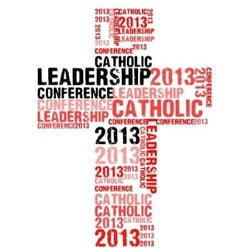
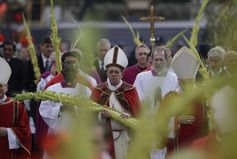
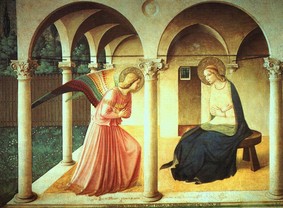


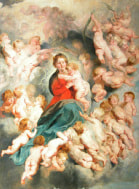
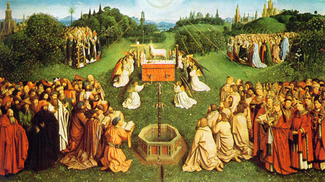
 RSS Feed
RSS Feed